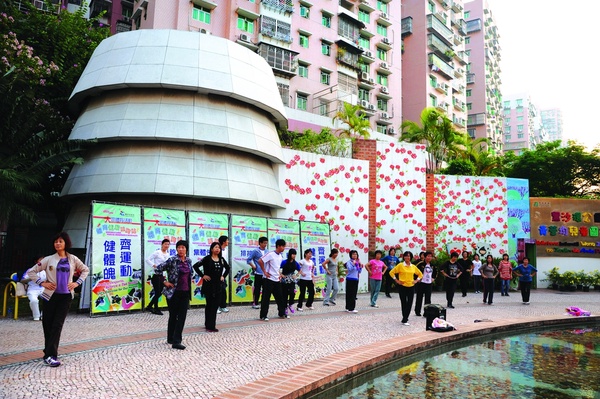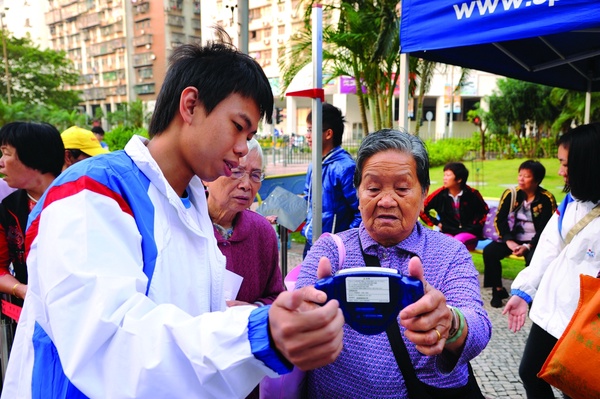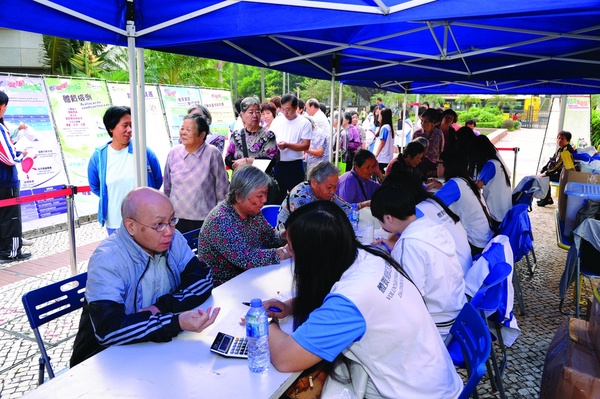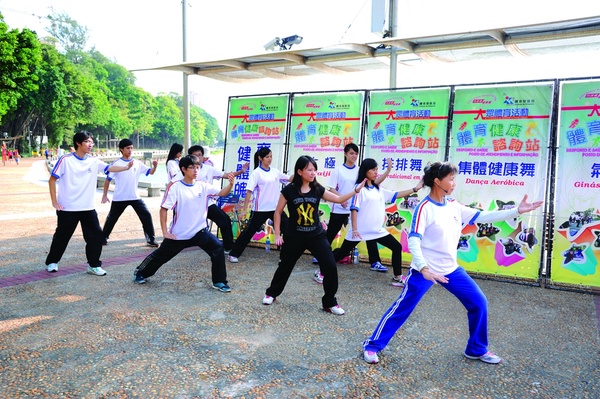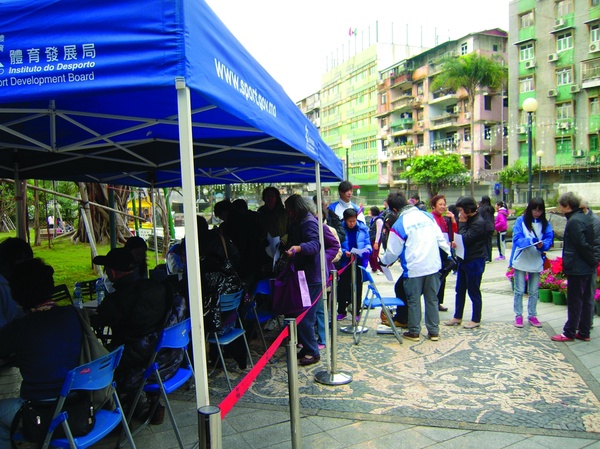Purpose
The purpose of Sport-Health Advisory Station was to provide convenient access to fitness tests, health and fitness counseling in order to educate the general public on proper training techniques and execution of personal exercise program as well as promoting fitness and sports nutrition information among the residents.
Offer advices on fitness improvement plan according to the result of individual fitness test.
Participation and statistics
A total of 13,879 people have taken the fitness tests that were conducted each Sunday in 2012, with an average of 278 people being serviced every week. The tests were carried out at the Guia Hill Municipal Park, the Flora Garden, the Iao Hon Garden, the Camões Garden, the Recreational Area at Rua do General Ivens Ferraz, the Mong-Ha Garden, the Recreational Area at Avenida Marginal do Lam Mau, the Flower City Garden, the Dr. Sun Yat Sen Municipal Park, the Recreational Area along the water reservoir and the Areia Preta Urban Park. Please see below for the data collected:
1. Total participants in 2012:
Male: 3,999
Female: 9,880
Among the participants, 28.8% were male while 71.2% were female.
2. Age:
Participants were divided into seven age groups: 6-19, 20-29, 30-39, 40-49, 50-59, 60-69 and ≥70 years old. Most of the participants were aged 60-69. The second and the third largest groups were aged 50-59 and ≥70 years old, representing 30.9% and 25.6% of the overall participants respectively. The number of participants in other groups had dropped sharply from 2011 and their proportion ranged from 1.2% to 7.3%. The data was similar to its 2011 counterpart, which showed that most male participants who do exercised regularly were aged 60-69 years old and the female equivalents, aged 50-59 years old.
3. Sports:
The three most popular sports were walking, aerobic exercise and running. The number of people practicing the sports made up 34.2%, 22.5% and 13.7% of all the participants separately.
There were differences in sport preferences between male and female participants. More male participants opted for running and walking than their female counterparts, whilst the female participants’ sport choices were more varied, including walking, aerobic exercise and Wushu such as Taichi and Luk Tung Kuen.
4. Training Duration:
Data showed that most of the participants exercised for half an hour to an hour each time. 79.4% of the participants exercised for at least 30 minutes and the rate was increasing, which suggested that more and more people paid attention to training duration, but one fifth of the participants practiced sports for less than half an hour each time. Female participants engaged in sports for a longer period of time than male.
5. Training intensity:
Most of the participants performed low-to-middle intensity exercises. The proportion of low and middle intensity training were 83.1% and 9.8% respectively. Participants who took middle intensity trainings made up a lower proportion of the tested population than they did in 2011, while the rate of exercising at low-intensity had risen.
6. Physique(Body Mass Index):
Among the participants, 52.8% of were within normal weight range. 43.2% were overweight and obese. 4.5% were underweight. There were more overweight male participants than the female equivalents, with men accounting for 47.8% and women 41.5%.
Conclusion
Sport-Health Advisory Station had serviced on an average of 278 people every Sunday in 2012. The number of participants were similar to 2011. The event was expanded to include the Mong Ha Garden and the Recreational Area at the water reservoir as the test venues for the convenience of the residents living in different areas.
Participants’ age distribution resembled that of 2011. Like in the previous year, most of the test takers, or 88.2% of all them, were aged 50 and above, while children, youngsters and adults between 20-39 years old account for a very small proportion. In other words, more effort will be needed in promoting the event and fitness information among these people, especially among the youth to increase their health awareness and motivation to practice sports.
Besides, participants’ sport preference was basically the same as in 2011. Walking still tops the list of choices. It was followed by aerobic exercise, running, Wushu, fitness training, aerobic dance, ball games, cycling and rope jumping.
As to training duration and training intensity, almost four fifths of the participants exercised for about 30 minutes each time, while most of them engaged in low-intensity exercises. While low-intensity exercises can improve individual health status, middle-intensity exercises for at least half an hour at three times or more a week are more effective in strengthening the heart and lung.
Data for 2012 indicated that test takers who weighed within normal range had slightly decreased, as there were more participants whose BMI (Body Mass Index) exceeded 24 and overweight test takers accounted for a bigger percentage than in 2011.


